Why do you need to fertilize cherries in the fall and how to do it correctly
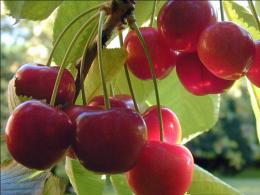
Bush and tree cherries in the garden grow in one place for several decades. Many varieties of cherries produce an annual harvest and the supply of nutrients in the soil cannot be completely restored naturally. Top dressing cherry blossoms in the fall are important for the plant. Let's try to understand its features.
Content:
Why do you need to fertilize?
The end of the growing season and the approach of the dormant season is an important time for gardeners. Cherry trees need help before the onset of winter and several mandatory measures must be taken. Fertilizing is one of them. Indeed, during the growing season, the plant actively absorbed both organic and mineral substances from the soil.
In addition, some of the nutrients were washed out of the ground by natural precipitation and additional watering, and some simply collapsed over time. Here are the main reasons for fertilizing in the fall:
- restoration of soil fertility after fruiting
- disease prevention
- preparing wood for winter frosts
- strengthening vegetative and generative kidneys
Cherry - one of the plants that blooms quite early, so the supply of nutrients should already be in the soil by the time the flowers bloom. After all, abundant flowering is the key to a good harvest.In addition, autumn feeding will help the growth and development of cherries in the next growing season.
The success of autumn fertilization depends on the correct timing for this activity.
When to fertilize cherries?
The timing of autumn fertilizing is important for cherries because adding nutrients too late will not have time to bring much benefit to the tree. After all, closer to winter, the plant stops feeding and moving juices and it goes into the winter “hungry”. Feeding too early will also not be very effective, since some of the nutrients may simply be destroyed, and some will be used by the cherry for other purposes, since the tree is still actively feeding and growing.
When choosing the optimal timing for applying fertilizer to cherries in the fall, you must take into account local climatic and weather conditions. In some regions where the autumn period is very short and soil freezing occurs early, the so-called autumn fertilizing must be completed by the end of August.
However, in most areas with a temperate climate, this event begins in early September and must be completed by September 21-25.
If the climate is characterized by a long and warm autumn, then you can feed the cherries until the first days of October. Important! In the first two years after landings Cherries do not need autumn feeding. In order for fertilizing to bring maximum benefit to the cherries and become the key to the future harvest, the plants need to carry out preparatory measures.
How to prepare a plant?
Before applying fertilizer, you need to inspect the tree and remove shrunken, damaged branches. If the diameter of the branches to be removed is too large, then treat the cut area with special compounds.After this, from a near-trunk circle with a diameter slightly larger than the diameter of the crown, all weeds are weeded out or manually removed.
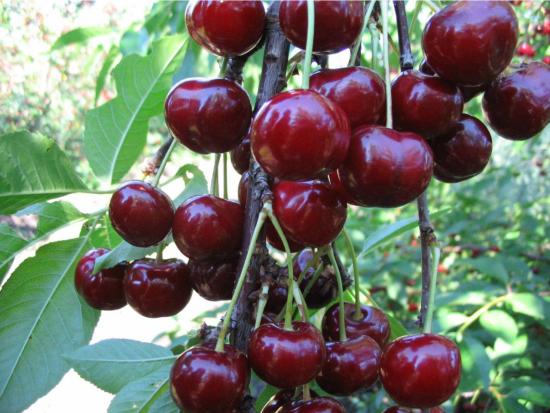
You need to work with a hoe very carefully; cherry trees may already have roots at a depth of about 20 cm. As soon as the tree trunk circle is free of weeds and plant debris, it is necessary to loosen the soil. The depth of loosening should not be more than 15 cm. A mandatory step before applying fertilizing is to water the trees abundantly.
At least 5-6 buckets of water should be poured under each tree or bush if their age is from 3 to 6 years. If the plants are older than seven years, then the amount of water increases to 8 - 10 buckets. The water should thoroughly wet all the soil in the area where the roots lie. When watering trees growing on a slope, you need to slightly increase the watering rate with the expectation that some of the water will flow down. Watering make 1-2 days before fertilizing.
Basic feeding rules
To ensure your cherries get the maximum benefit from all the nutrients you add, you need to follow a few basic rules.
Mineral supplements
Important! When starting to fertilize cherry trees in the fall, you need to take into account that nitrogen fertilizers cannot be applied in the fall. Its excess can disrupt the normal entry of plants into the winter dormancy period. In order to increase the content of minerals in the soil in the fall, phosphorus and potassium fertilizers must be applied to the cherries.
Video about proper care of cherries:
Ideally, the rate of application of mineral fertilizers should be calculated after laboratory testing of garden soil. If this is not possible, fertilizing for trees aged 4-11 years is recommended in the following quantities:
- superphosphate in the trunk circle 300 g
- calcium chloride - 180 g
If cherries over 11 years old, then the amount of fertilizer is increased to 450 g and 250 g, respectively. Fertilizers are applied in both liquid and dry form. The soil under the tree is either spilled with a fertilizer solution, or they are evenly scattered over the entire area. Important! Potassium and phosphorus fertilizers are not applied to trees younger than three years old, inclusive.
Cherry trees are responsive to the addition of calcium. Its source for plants is crushed chalk. It is best to add up to 1.0 - 1.5 kg of chalk around the outer circumference of the tree trunk circle. Before this, you can fill the chalk with water until it becomes a liquid mash and pour it over the tree in a circle.
Important! Adding chalk should not be confused with liming the soil. If a gardener is against the use of chemically produced fertilizers, then adding wood ash will be a good mineral support for cherries. It can be applied while simultaneously loosening the soil.
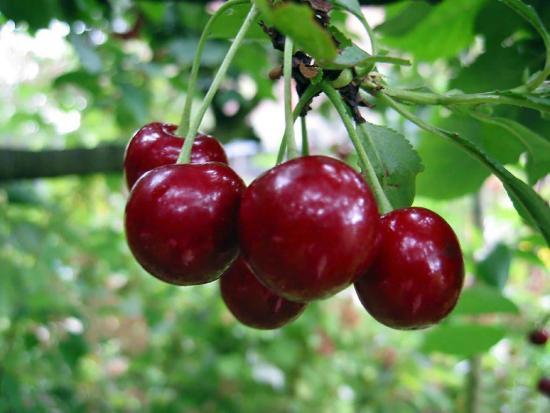
The depth of embedding ash into the soil is up to 10 cm. For mature cherries, about one and a half kg of wood ash per square meter is sufficient. m. Iron deficiency can be compensated for by autumn spraying and whitewashing of trunks with a solution of iron sulfate.
Organic fertilizers
Starting from the fourth year of life, cherries can be grown in the fall feed organic. This plant really likes rotted manure or compost. The frequency of adding organic matter in the fall is once every three years. The norm is one bucket per square meter. meter of area. Compliance with the above rules will be the key to a successful winter and future good flowering and excellent harvest.

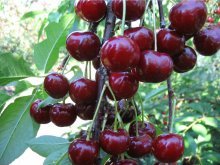
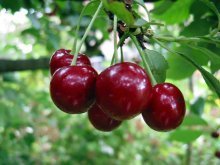
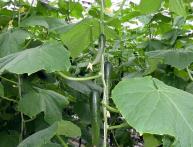
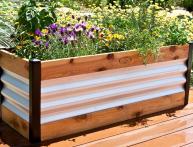

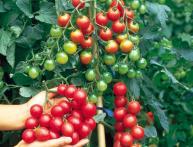
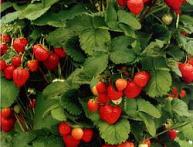
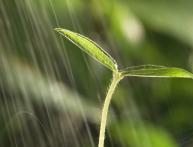
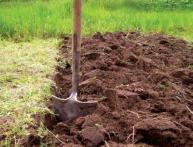
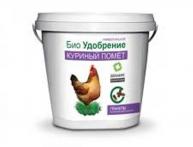
Comments
We put rotted manure and ash under the cherries, approximately as recommended in the article.In late autumn, we dig up the trees, make shallow holes, apply fertilizer and cover them with soil on top.